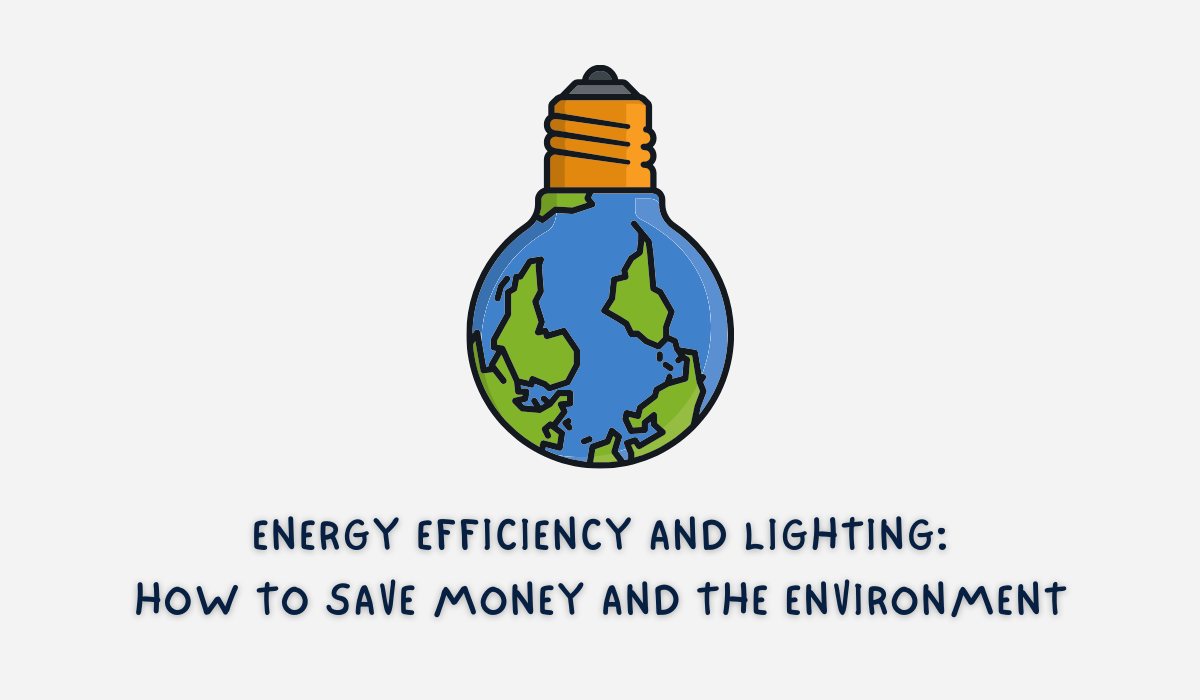
Energy Efficiency and Lighting: How to Save Money and the Environment
In today's world, where environmental consciousness is not just a trend but a necessity, energy efficiency in lighting has become a crucial topic for households and businesses alike. Not only does it offer a pathway to significant cost savings, but it also represents a vital step towards reducing our ecological footprint. This blog post explores the intersection of energy efficiency and lighting, offering insights into how innovative lighting solutions can contribute to both financial savings and environmental sustainability.
Understanding Energy Efficiency in Lighting
Energy efficiency in lighting is measured by the amount of light produced per unit of energy consumed. Traditional incandescent bulbs, for example, convert only about 10% of the energy they use into light, with the rest being lost as heat. In contrast, modern lighting technologies such as LED (Light Emitting Diodes) and CFL (Compact Fluorescent Lamps) are designed to produce the same amount of light using a fraction of the energy (source: Energy Star).

Source: ZLED Lighting
The Rise of LED Lighting
LED lighting has revolutionized the concept of energy efficiency in the lighting industry. LEDs are not only more energy-efficient than traditional bulbs but also last significantly longer, reducing the need for frequent replacements. With advancements in technology, LEDs now offer a wide range of colors, brightness levels, and designs, making them a versatile choice for both residential and commercial spaces (source: Department of Energy).
Smart Lighting Solutions
The integration of smart technology into lighting offers another layer of energy savings. Smart bulbs and lighting systems can be controlled remotely via smartphones or voice assistants, allowing users to adjust lighting settings based on real-time needs, schedule lighting to reduce waste, and even monitor energy consumption (source: CNET).

Source: Pinterest
Practical Tips for Enhancing Energy Efficiency
- Switch to LED Bulbs: Replace incandescent and halogen bulbs with LED options to significantly reduce energy consumption (source: Energy Star).
- Utilize Natural Light: Design spaces to maximize the use of natural light, reducing the need for artificial lighting during daylight hours (source: Architectural Digest).
- Install Dimmer Switches and Motion Sensors: These devices can adjust or turn off lighting when not needed, further conserving energy (source: Better Homes & Gardens).
- Regular Maintenance: Keeping lighting fixtures and bulbs clean can improve efficiency and light output, ensuring optimal performance (source: Real Simple).
Conclusion
Adopting energy-efficient lighting is not just a cost-saving measure but a responsibility we all share towards the environment. By embracing newer technologies and making conscious choices about how we light our spaces, we can contribute to a sustainable future while enjoying the benefits of modern, efficient, and flexible lighting solutions.
Tags: #EnergyEfficiency, #SustainableLiving, #LEDLighting, #SmartLighting, #EcoFriendlyHome, #GreenTechnology, #SaveEnergy
